Extremely Cold: Cool Science
This week, we’re continuing our month of science at the extremes, by looking at extreme cold. Including expeditions to the poles, what happens at absolute zero, and the animals that can survive temperatures we never could. Plus, in the news, the massive death risk from climate change, a prize for mapping the sea bed, and a new piece of the puzzle in the story of human migration...
In this episode
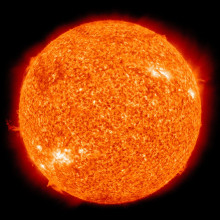
01:03 - Global warming's heat death toll
Global warming's heat death toll
with Eunice Lo
Scientists from the University of Bristol are saying that limiting extreme global warming could prevent thousands of people from dying from the effects of high temperatures. They claim that - to achieve this - every country needs to ramp up its climate commitments to reach the Paris agreement’s target of limiting the global temperature increase to 1.5 degrees Celsius. By looking at cities in the US, this is the first study to examine the human mortality cost if global warming goes above two degrees. Phil Sansom spoke to the paper’s lead author Eunice Lo...
Eunice - Hundreds to thousands of heat-related deaths could be avoided if we limit global warming to 1½ degrees Celsius. It's a substantial number based on the current climate commitments we are probably heading towards 3 degree warming, so this is way higher than the 1½ or 2 degrees in the Paris Agreement. And so our study looked at what would be the public health benefits of increasing our climate action to achieve the Paris Agreement’s goal.
Phil - So what exactly did you do?
Eunice - We have data from the period of 1987 to 2000 of daily temperature and also daily counts of mortality of 15 cities in the United States.
Phil - All US cities?
Eunice - Yes, all US cities, and they're all rather populated or they're major US cities. Part of the funding for this paper was from the Union of Concerned Scientists in the United States, and also the United States have more reliable health data and weather station data than many other places in the world, so that was another reason why we chose to study the United States.
Phil - Okay. So you had this data from the 15 cities, what did you do with it?
Eunice - We found relationships between temperature and mortality. So we were able to then say, for example, at 25 degrees Celcius in New York City, what is the mortality risk? And so with this relationship we combined it with future climate projections to estimate future mortality levels.
Phil - It's as simple as that, you could just find the relationship and then apply it to what we know about future temperatures?
Eunice - There's a lot more complicity in the modelling side of things. We have created scenarios that describe the 1½ degree, 2 degree, and 3 degree’s world to create the results. We have found that hundreds and thousands of heat-related deaths that would occur in the current trajectory of 3 degree world that could be avoided if we limit global warming to 1½ degrees. So essentially, this many deaths could be prevented if we increase climate action.
Phil - I guess it seems like a lot in itself, but in a city of maybe millions of people a thousand people isn't that many. Do you think that’s the full picture?
Eunice - I do think this is a significant result because, obviously, we wouldn't want huge increases in heat-related mortality in a warming world, and hundreds to thousands of people per city in a certain year is kind of a lot in my opinion.
Phil - Are there any other factors that weren't included that could potentially make things easier or could make things worse?
Eunice - Yeah, yeah. We have based our study on current population and not included any population growth in the future, and we also haven't included an ageing population in our study. People who are 65 years old or above are more susceptible to heat-related mortality than younger people. So these factors could increase our estimates in terms of the number of heat-related deaths. But, on the other hand, if there were future adaptation methods for example, if there is better healthcare or there's an improved early warning system for extreme high temperatures or heat waves, then these adaptation measures could also reduce the number of heat-related deaths.
And so the takeaway message here is that regional adaptation is also very important and could prevent exacerbation of, or large increases in heat-related mortality in the future.
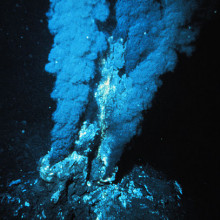
05:39 - Mapping the sea bed
Mapping the sea bed
with Peter Cowley
There’s an old fact that we know more about space than we do about the bottom of the sea. But there are plans to at least put a dent in that deficit. Seabed 2030 is a plan to map the bottom of the sea, and a team based in the UK have recently won the $4 million Shell Ocean Discovery XPRIZE for developing a seabed-scanning technology. To understand it, Chris Smith spoke to Naked Scientists tech correspondent and angel investor Peter Cowley...
Peter - They've put together some existing systems in a novel way. It's a prize that was launched about three or four years ago and they won it. It's actually 14 nations but the major part of it, which is the ship itself, was designed here in the UK. What the prize was for was to be able to map the seabed in a much better way, and so this was a combination of a ship and an underwater drone type device.
Chris - How does it work?
Peter - The underwater drone looks a bit like a torpedo, it's self-propelled, it will do up to 4 knots. It's got a variety of different sensors on it including cameras and other devices. But what's novel about it is that it's also got associated with a ship which is also autonomous. So the torpedo will come up to the surface, get onto the ship, which is autonomous as well, charge itself up and then go back down again. So the ship can then act as a base for it and the ship, as I say, is fully autonomous and if necessary could be partially autonomous.
Chris - What measurements are they going to make and how long is this going to take?
Peter - The prize itself was asking for devices to map out the surface of the seabed at up to 4000 metres deep, about 12,000 ft. And the target was for this prize was to have 24 hours to map as much as possible, and they managed to map 278 sq. kilometres in that time. But the idea behind it is to find geological features and they found more than 10 features which haven't been known before. In the Mediterranean this was as well.
Chris - So in other words it's going to look at a subset of the ocean floors, because we must have mapped quite a bit already, haven't we?
Peter - It's only a few percent.
Chris - Really!
Peter - Yeah, yeah.
Chris - And so they'll get this map, what are they going to do with it?
Peter - When they finally do it, there's all kinds of things they can do with it from commercial applications, for instance mining. There's huge amounts of minerals down there on the seabed. They can do forecasts of tsunamis, there's a whole load of ocean current measurements they could do. So the idea is to have a map of the whole world by 2030s, it says, which can then be analysed by, particular by this organisation the General Bathymetric Chart of the Oceans, which is the overarching body here.
Chris - Of course, the conservationists are quite worried about this undersea exploitation, aren't they? Because there are these wonderful pristine resources down there in huge abundance, these mineral things. And they are relatively accessible to us these days compared with the price now of recovering, for instance, oil in the same way. But at the same time, if we don't know what is down there in terms of geology, we also don't know what's down there in terms of biology and we could, therefore, in the course of going and recovering those minerals be doing untold damage to unique species?
Peter - As you'll see later on this program with an animal I've just seen.
Chris - Say no more.
Peter - Yes, say no more.
Chris - Peter is referring to the fact that Lloyd Peck is coming on and he's got in a box a dinner-plate-sized sea spider!
Peter - Of course that's the point! I met a guy some years ago which was picking up cobalt nodules off the Hawaiian coast and he'd actually put a hundred million pounds in to do this and they were hoovering them up. So yeah, there's clearly going to be an ecological disadvantage but there is also an advantage in being able to find these minerals in places which aren't going to damage the normal above surface land.
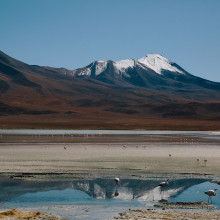
10:38 - Migrations in Siberia
Migrations in Siberia
with Eske Willerslev
The story of how our early human ancestors originated in Africa and then colonised the Earth is an evolving one. And now scientists have added a new piece to the puzzle, as Adam Murphy has been finding out from geneticist Eske Willerslev…
Adam - When we think of northeastern Siberia, the most northeastern part of Russia, we think of a cold place where humans couldn't live. Plenty of people do live there though, and while archaeological records go back 30,000 years, the genetics of the people who live there can’t be traced back past about 10,000 years. Published in Nature, new work took DNA from milk teeth found in the region and uncovered evidence of a previously unknown group of humans called the Yana people. These people would predate the ancestors of Native Americans into Siberia, and fill in a huge gap in the story of human migration. I spoke to Eske Willerslev from the University of Cambridge about what got him interested in a story like this in the first place.
Eske - Well I've always been interested in the peopling of northeastern Siberia, because when I was young, in my late teens and early 20s, I spent time as an explorer and also a trapper in northeastern Siberia, so that was before I became a scientist. But I was always wondering back then: why do we have all these people speaking different languages, having different lifestyles, and what are their relationship to Native Americans, which are just on the other side of the Bering Strait?
Adam - What did he find out then?
Eske - We basically have uncovered the population history of northeastern Siberia. And there has been a lot of mystery connected to that story, because the archaeological record goes back more than 30,000 years for this area, while if you look at contemporary people and their genetics it suggests that the history is no older than about 10,000 years. So by sequencing ancient skeleton remains we have found out that there has been at least three migration waves of people into northeastern Siberia, and the earliest one dating back to 31,000 years. This is from two tiny milk teeth found at a site called the Yana site, close to the Yana River, and these people are a people that we didn't know before. It's a very old people that diversified approximately at the same time when Europeans and Asians are developing as distinct groups. So there is actually kind of a third branch leading up to these Yana people but that are now extinct.
Adam - These Yana people helped puzzle out the story of modern Siberians and also of Native Americans.
Eske - So Native Americans, many people thought that the ancestors of Native Americans must have been the first people in Siberia, but they're not; they're actually the second migration coming up there, and they are mixing up and replacing these Yana people. And then there's a third migration happening within the last 10,000 years, and this is the one giving rise to most Siberian people today.
Adam - But getting DNA out of 30,000 year old milk teeth can't be easy. How did they manage it?
Eske - Well, that was also a challenge, because normally we'd use the root of the tooth. And the crown, we basically don't believe there's much DNA in it, so we are keeping that and returning it to the museums and so forth. But in this case there was almost no root material left in these tiny, tiny milk teeth. So we asked permission to basically pulverise the crown, and we got that permission, and there was beautiful DNA preserved in the crown of these teeth. And from there we reconstructed very high quality genomes.
Adam - The climate of that part of the world isn't exactly the most inviting. How did these people adapt to live there?
Eske - That is the interesting part, I think, because we always think of northeastern Siberia as one of the most hostile environments. I mean, it's one of the coldest areas on Earth, temperatures go down to below -60°C, and it's just not a place where we expected humans would like to be. And therefore the general view has also been that the population history of northeastern Siberia has been very simple, right; it's not like many migrations, or many different people wanted to go up there; but we can see this is definitely wrong. It's just as, you can say, dynamic as is the pre-history of Europe, for example. And it's probably because one thing in the equation we forget about when we think about northeastern Siberia today is that, back in the ice age times, this was an area for a diverse fauna of big mammals. There was woolly mammoths, rhinoceros, horses, bison, etc. And what we can see is that the Yana people up there 31,000 years ago were living as big game hunters. They were mainly living from woolly mammoth and woolly rhinoceros. So it's probably been a very productive place, and even though it's cold, and windy, and you’re probably freezing your butt off up there, well at least there was a lot of food.
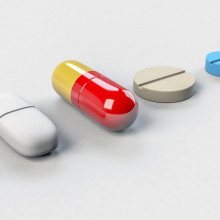
16:08 - Pioneering tomorrow's medicines
Pioneering tomorrow's medicines
with Jane Osbourn
When the pharmaceutical industry was in its infancy, researchers started with a disease and then looked for a drug that could make a difference. That’s all changed as the industry is able to unpick the mechanisms of diseases, right down to the genes that cause them, and then build treatments that target precisely those pathways or systems that are malfunctioning. Often this involves crafting complex “drugs” called “biologics” that are made by living systems themselves; a good example is antibodies. One of the pioneers in this sector is biochemist Jane Osbourn from the pharmaceutical company AstraZeneca. And she’s just learned that her efforts over the last 2 decades, which have led to the successful launch of a number of drugs that are changing lives all over the world, have been recognised by an OBE on the Queen’s birthday honours list; so Chris Smith spoke to her in the studio about her discoveries...
Jane - Well, maybe if I start by explaining what an antibody is: antibodies are proteins that are produced by cells in your blood, plasma cells, and they are the body's defence mechanism. So they're the way the body protects itself against pathogens - bacteria, viruses - generally referred to as antigens. And the reason that antibodies are so good at this is your body actually makes lots and lots of different versions of these proteins with different shapes, and those shapes can very precisely recognise the complementary shapes on the pathogens - on the antigens - and the antibody's able to neutralise those pathogens.
Chris - And they do it selectively? So they're going to go for the bad guys and they're not gonna touch the good guys?
Jane - That's right, yeah. So they have a way of recognising what's foreign and what is your normal repertoire of antigens. Occasionally you do have issues with that, with autoimmune diseases, but in general it's very, very effective.
Chris - And how are you seeking to utilise our knowledge of how these antibodies work and do that, in order to cure disease?
Jane - Well the great thing, as you said at the beginning, is the very specific nature of these binding interactions. It means that you can target very precisely mechanisms that are disrupted in human disease. And the reason antibodies are so good at that is because you can target a target on a cancer cell, say, or a protein that's upregulated in the blood that may be causing inflammation. So you can specifically target those "bad guys" if you like, and you don't target anything that you wouldn't want to, so you don't get off-target effects which sometimes you can get with the chemical derived drugs.
Chris - You're saying that one would make an antibody that would go after a specific target?
Jane - Absolutely.
Chris - But that means you've got to do that or make the body do that. It doesn't already do that. So how does one go about that?
Jane - So we’ve developed quite a range of different techniques to do that, starting actually back in 1975 really with the invention of monoclonal antibodies, which is a way of making large quantities of a single antibody of a single shape; which was actually developed here in Cambridge by César Milstein and Georges Köhler. So that was a sort of first step. And the first mouse antibodies we used to treat transplant rejection back in the early 80s. Now you don't really want to use a mouse antibody to treat a human because it's a foreign protein.
Chris - So your immune system would recognise, “this is not supposed to be in my body,” and you'd then have your own immune system attacking the very thing that you were trying to make to help you?
Jane - Absolutely. So the holy grail of what we've been trying to do, and many of our colleagues in the industry have been trying to do, is develop fully human antibodies that won't be recognised as foreign by your body. And you can do that by using...you can actually use mice and knockout their own antibody genes and put human genes in there; or you can use a technique called phage display, which is a way of putting antibody genes on the surface of a virus, and then using the virus to select antibodies that bind your drug target, your disease target, that you want to interact with.
Chris - In essence then, you know what the target is you want to go for, you've got to persuade an immune cell to start making the right antibody you're after. How do you then bulk that up? How do you, once you've got an antibody that you know is going to work, how do you make enormous amounts of it so that you've got enough to treat a person?
Jane - If you use the phage display system, you can isolate the genes for the antibody that you want to make. And once you've done that, then you can put those genes into a stable cell system, and you can make large amounts of it in fermenters. So that's actually a relatively simple thing to do now. It's taken 20 years to develop those techniques but we can make large amounts outside the body and then inject them into the patient.
Chris - You move the gene that makes the antibody into some kind of cell that you then grow in enormous quantities in culture.
Jane - Yeah.
Chris - And then you just sieve off the antibodies.
Jane - That's correct, yeah.
Chris - Even so, that sounds like enormous amounts of work, because this industry has been frustrated by the fact that this is very hard to do, and it does end up therefore costing a lot of money, doesn't it? So as the world's population continues to increase, there are 7.5 billion people on earth now, and they all want a slice of the action and access to these wonderful treatments. Can we afford it?
Jane - Well, drug affordability is a real challenge. But what we are doing is working on ways we can make the processes more efficient. We can certainly make a lot more antibody in stable formats than we could when I started in the industry 25 years ago. And I think the key thing is really making sure that we're using antibodies wisely, for the right patients. So we've got a lot more sophisticated in our understanding of how you choose which patients will have the best and the most effective responses to our antibodies.
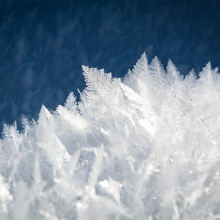
Living in the Arctic
with Charlotte Connolly, Scott Polar Museum
Humans have been living in cold parts of the world for tens of thousands of years. But how did we adapt to life at these extremes, and what kind of challenges do you need to keep in mind if you want to thrive? Moreover, how did the early explorers to the poles survive? To find out, Adam Murphy took a trip to the Scott Polar Museum at the Scott Polar Research Institute in Cambridge to meet Charlotte Connolly, to learn about life at low temperatures...
Adam - In general, the further north and south you go from the equator the colder it gets,with both the north and south poles covered in ice. You wouldn't think people would want to live there, but they do, and they have done for a very long time.
Charlotte - People have been living in the Arctic for thousands of years; we're much more recent visitors to the Antarctic. But people who live in the Arctic and have lived in the Arctic for a long time have been reliant on typically animal materials, so furs and those kinds of things to make sure that they can keep themselves warm.
But they've also had to make sure that they eat enough fat, making sure their nutrition is right in order to have enough energy to live their lives. When people go off to Antarctica, if they're doing research with us, we know that if they’re going to be out in the field they need something like 6000 calories a day. Four or five times as much energy is required just kind of survive and live life in a normal way if you're in a very cold area.
There are a few other things to consider, so making sure that you keep warm is one of them but keeping dry is another one. Some of the clothing that you'll see if you wander around the Polar Museum looks surprisingly thin, and that's because if you get too warm, if you get so warm that you sweat, then your sweat will chill you off more than if you are just wearing something thin.
Adam - When it comes to furs, some work better than others.
Charlotte - One of the furs that was used by indigenous people, particularly across Scandinavia but elsewhere as well, and then was adopted in the 20th and the19th century by European explorers was reindeer fur. Now reindeer fur is made up of lots of fibres that are hollow, so hollow things trap a bit of air in them and that means they're really good insulators. So good in fact that when reindeer lay down in the snow or if snow falls on them, it doesn't melt because they're that well insulated.
Adam - When Westerners came to start exploring these areas aiming to be the first to reach the poles, what did they adopt to make the journey?
Charlotte - We're stood in front of a sleeping bag. It's a sleeping bag that was used by Captain Oates. He was one of the people famously who lost his life on the expedition with captain Scott. But the reason I’m pointing it out to you is because it’s made of reindeer fur, and that use of reindeer fur comes directly from people living in the Arctic who've lived there for thousands of years who know that reindeer fur is an incredibly good insulator. So it's an example of how, in the 20th century, people are still using those kinds of technologies that they borrowed from people who live in the Arctic in order to keep themselves warm and safe when travelling in the polar regions.
Adam - And what kind of foods would you have to bring for something like this?
Charlotte - In the museum we've got various tins of things. We've got some stuff which is delightful, called pemmican, that's kind of ground up meat and fat, which is very densely calorific and does exactly what you need which is give you lots of energy. Unfortunately, it's not very interesting food to eat. So the folks who were in the Antarctic with Captain Scott would boil a tub of water, they'd put some pemmican in and then they'd add something, whether it was mustard powder or chocolate powder, really anything to give it just to give it a bit of flavour.
Adam - We mentioned Scott's journey earlier. His trip to the Poles ended in tragedy. Captain Oates, who owned the reindeer sleeping bag, famously sacrificed himself, leaving the tent saying “I am just going outside, I maybe sometime”, never to return. What went wrong with Scott's expedition?
Charlotte - Captain Scott went all the way to the South Pole along with four companions. I always say, it's one of those trips where if one of the things that went wrong had gone wrong, they'd have been fine. If two of the things that had gone wrong had gone wrong, they probably would’ve been fine. But there was an awful lot of little things and some of them quite big things that went wrong that altogether conspired to make it a disaster for those people concerned. They were unlucky with the weather, someone had got an old injury that opened up, they didn't have a good concept of what caused scurvy, they used a different type of technology to Amundsen, say. There were lots and lots of little things that altogether added up to make it a problem and, unfortunately for those five people, they didn't make it back.
Adam - What did Amundsen do differently that helped him?
Charlotte - Scott and Amundsen had totally different ambitions in getting to the South Pole. Amundsen was about getting there, planting a flag, getting back. Scott also was about getting there, planting a flag and getting back, but along the way he was really interested in doing science. So actually on the way back from the South Pole they stopped to collect geological specimens, for example, at a point when they didn't realise how much they were endangering themselves. And so they just had different ambitions and for Amundsen it was absolutely a race. So he set about finding out what was the quickest way to get there, whereas for Scott it was a much bigger type of project. So they were just approaching it in really very different ways, and where Scott had lots of bad look, Amundsen was taking an untried, untested, unmapped route. There was an element of luck there that there was actually a route through for him.
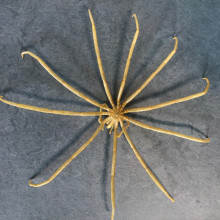
28:13 - Chilled out animals
Chilled out animals
with Lloyd Peck
It’s not just humans that have had to adapt to life at low temperatures - other animals do too, of course. And evolution has endowed them with an array of mechanisms to enable them to cope - and flourish - in the freezing cold. Lloyd Peck studies them with the British Antarctic Survey in Cambridge, and he spoke to Chris Smith live in the studio...
Lloyd - There are some animals that can be put into liquid nitrogen and they go solid - they don't freeze, they vitrify, they go like glass and these are nematode worms and tardigrades. And you can take them down to below -90, they vitrify, you warm them up, they become liquid again and they function absolutely normally. That's not exactly living at low temperature but it's surviving very very low temperatures.
Chris - How do they do it?
Lloyd - They do it because they're very small and because their composition is one that allows them to go down to low temperatures very very quickly. And that means they don't have the problem of ice crystals growing in them because they cool so fast that they just turn into the equivalent of a glass.
Chris - So some bits of the body of a larger creature are going to be at a still relatively warm temperature when other bits are at a very low temperature and it's that that causes part of the problem then? Whereas if you're really small, you lose heat really quickly, everything gets cold all at once and you freeze solid?
Lloyd - That's just about the right answer, yeah. Once you get above a certain size then the cooling is at a rate whereby ice crystals can form. And those ice crystals are the real problem for organisms that are trying to live at low temperatures because the ice crystals break the cells, they break the tissues and that damage inside the animal is what kills them off at the low temperatures.
Chris - But there are some much bigger animals that do successfully freeze, aren't there, things like frogs that can tolerate being frozen absolutely rigid?
Lloyd - Yeah. The Canadian wood frogs are about the biggest. And in the wintertime they freeze and you can take them into the laboratory, you can take them down sub zero temperatures, they freeze solid. They're just like an ice lolly.
Chris - They don't taste as good I bet though?
Lloyd - Well, I've never licked one and tried to taste one, and I wouldn't advise anybody to try and do that. But their consistency is very much like a...
Chris - How do they do it then? How are they succeeding, whereas if I put my strawberries in my freezer they definitely don't re-emerge looking the way they went in?
Lloyd - The way that the frogs do it is they specifically allow the water that is outside their cells to freeze and they use a range of chemicals to stop the cells themselves freezing. So there cells stay completely intact and they use chemicals to do that are called cryoprotectants, and it's the freezing of the water outside the cells that makes them go solid. During the wintertime, their metabolic rates drop really low, they use very little energy. Come the spring, they can defrost but there cells have maintained a liquid environment throughout the whole of that. Other groups of animals, they use similar chemicals to these what are called cryoprotectants to stop the body freezing and they survive at low temperatures by staying liquid all the time, and they use those chemicals and call them antifreezes.
Chris - It's an interesting adaptation then; you either put yourself into a frozen state so you don't need to go find food when conditions are just not very amenable to life in general with the ability to thaw yourself out afterwards, or you do decide to stay liquid and you have to evolve to have some pretty clever strategies to do that. Can we use that science though, because I can think of lots of examples where actually working out how these animals are doing this could turn into much better ways to freeze my strawberries or popsicles and things?
Lloyd - Yeah, it's not so easy with things like strawberries. But we currently use the antifreeze from Antarctic fish to make our ice cream very smooth. And 10 or 15 years ago there were real issues with making ice cream smoother because you wanted to control the size of the ice crystals, and the technology we had then wasn't really very very good at doing it.
Chris - Is that what gives you smooth ice cream then, smaller ice crystals?
Lloyd - Yes. If you can keep the ice crystals small, the ice cream stays smooth. And what we do now is we get the ice crystals to a certain stage, we put in antifreeze that comes from Antarctic fish that we culture in biotechnology, and that keeps those ice crystals at the size that we want, and it makes our ice cream very very smooth compared to what it was.
Chris - So there you go, there's a bit of science you can lick. You wouldn't go near the frog, but you'll eat an ice cream from an ice fish.
Lloyd - That's right. And you are, in fact, licking a bit of what's come from the technology based around an ice fish, that's right.
Chris - But turning to Antarctica again, which is somewhere you’ve spent a lot of time studying, you have sitting on the table in front of you something that looks pretty awesome. It’s the size of a dinner plate, what's that?
Lloyd - Well actually, I've got two things on the table in front of me. One is about 5 mm across and that one is one of the biggest sea spiders in the UK. But next to it is the one that you were talking about before which is an Antarctic sea spider. I'm holding it up now; it's about a foot across, and it's not one of the biggest Antarctic sea spiders. The biggest ones that we get in the Antarctic are over 2 feet across and they're at least 5,000 times heavier than the biggest sea spiders that we have in the UK.
Chris - So why the difference then? This thing lives in very cold conditions, the other one lives in much warmer conditions but is a lot smaller, why?
Lloyd - The difference is that as the temperature goes down, the metabolic rates of animals that are cold-blooded and are the same temperature as their environment go down. The temperature slows down their chemical reactions in their bodies, it slows down their metabolic rates. So in Antarctica the metabolic rates of the animals living there are 20 to 30 times slower than animals in the tropics in the sea. There's also more oxygen in the water; there's roughly twice as much oxygen in the water in the Antarctic as there is in the tropics because it's more soluble at low temperatures.
Chris - But those animals don't scuttle around a lot slower despite having a lower metabolism do they?
Lloyd - They do.
Chris - I've seen them moving, they don't move very very slowly.
Lloyd - Absolutely. But if you compare them with a similar sized animal in temperate zones they're moving around 3 to 4 times slower than the similar animal...
Chris - And that's just energy?
Lloyd - That's a whole range of things but it's the slowed physiology. It's the energy available, and that more oxygen and that slower use of the oxygen means they can get up to 5,000 times bigger on a weight basis.
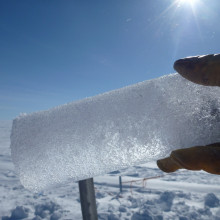
Ancient air in Antarctic ice
with Robert Mulvaney, British Antarctic Survey
Climate change is considered to be one of the most serious threats facing us in the coming decades. So understanding why things are changing, and how they’ve changed in the past is critically important. Travelling to the extreme cold and carrying out science in places that would freeze your fingernails off has its benefits, as Adam Murphy learned when he took a trip out to the British Antarctic Survey, to speak with Robert Mulvaney...
Adam - Sometimes it doesn't matter if it's cold, even extremely cold, there’s still science to be done. And there's lots of science being done in Antarctica. A lot of it has to do with ice cores, cylinders of ice taken out of the Antarctic ground. But to learn exactly what these tubes of ice are for, I spoke to Robert Mulvaney from the British Antarctic survey who has spent 25 seasons in Antarctica...
Robert - I'm a glaciologist and in particular I drill ice cores. And what I'm looking at is climate and the atmosphere evolution over many thousands of years. So if we drill into the ice we’re drilling further back in time so in the polar regions you essentially get very little snow melting at the surface. As the snow falls it just builds up year on year and eventually compresses to the point where the layers are really really thin near the bed, but the ice might be 2 to 3, maybe 4 kilometres thick in places. If I go and sit in a camp on the surface and then set up a drill rig and drill down into the ice, I'm drilling further and further back into the past. Now the ice remembers something about the climate and what we do is we drill these cores of ice, we bring them back to the lab here and we measure things in the ice that tell us about the climate. But also locked in the ice are tiny bubbles of air, and these bubbles of air are the actual atmosphere of the past. It's the only place on Earth that still has an archive of past atmosphere so as we drill deeper into the ice we're able to recover the climate record from the ice itself, and then a record of the atmosphere from the bubbles trapped in the ice.
Adam - To learn exactly how they keep the ice and what they do with it, we donned our jackets and wandered into the freezer
...Oh, that is noticeably colder.
Robert - So I've just brought you into the cold laboratory here at BAS. We keep this room at about -25 and this is where we process the ice. So what we take is the column of ice that we've collected in Antarctica and we cut it into the sections that we're going to use for analysis. What we've got here, it's got an arrow on it to say which way up it is. It's just a column of ice, and every column of ice looks exactly the same, so we have to be able to identify it when we get back here. It's got the top at this end.
Adam - Is that the newest ice at the top?
Robert - Exactly. The bit nearest the surface is the youngest ice, the bit nearest the bottom is the oldest ice. We know at this site the ice at the bottom is likely to be something like 140,000 years old. So if you imagine we’re in a warm period at the moment, we could go back 140,000 years ago you're in the ice age before last, so this is ice age two. At the bottom of the core this ice will be 140,000 years old or thereabouts.
Adam - Back in the comfort of a nice warm office waiting for my jeans to come back to a normal temperature, I asked about the human effects on the climate...
Robert - If we look at the greenhouse gases, what we see is through all of the cold period, so all of the glacial periods, the level of carbon dioxide in the atmosphere is 190 parts per million or thereabouts. If we go into a warm period the number is about 270 parts per million. You get all the way up to about the 1770s and suddenly it starts to rise, and it starts to rise and continues to rise until you get to the level we see today in the atmosphere, which is about 410. And around about the 1770s was when the steam engine was invented. And almost as soon as the steam engine was invented the industrial revolution kicked off, we started burning more and more fossil fuels and almost instantly the atmosphere responded and carbon dioxide began to rise. The level of 410 we see today, we can't see anything like it in the last 800,000 years.
Adam - Now I remember reading somewhere that you can see traces of lead in the ice from when we used to drive cars, is that true?
Robert - Yes, that's true. So almost anything that's emitted into the atmosphere in terms of pollution, if it remains in the atmosphere long enough to be taken up and carried by wind and circulation to the polar regions and deposited in snow, then there's a chance that we can measure it. It's very difficult to measure. If you imagine the amount of lead we measure is something like a grain of salt in an Olympic swimming pool, that's a sort of concentration we were trying to measure. What we are able to show is that the lead in the atmosphere had been rising again since the point where cars started to use leaded petrol. Now there was a fairly low level of lead which supports lead in petrol and the lead began to rise quite quickly. Now up until that point, I think the oil industry has always claimed that most of the lead that you see in the atmosphere came from natural sources, it came from things like volcanoes. But when we showed them what the lead looks like in the polar regions where you get this very low level and then a rise just at the point when lead was put into petrol. They said okay, we believe it, we understand. Lead was taken out of petrol and now the lead is coming back down to the levels that we saw before it was ever introduced into petrol. So in a sense the atmosphere has cleaned itself up. There's much lower levels of lead in the atmosphere and we would have seen in the 70s and it's down to almost its background level.
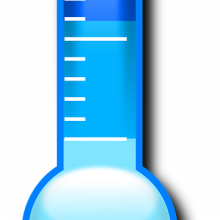
How cold can you go?
with Nigel Cooper, University of Cambridge
When it comes to cold, not even the Antarctic can out-compete the right physics lab. Chris Smith spoke to Nigel Cooper, from the Cavendish Laboratory in Cambridge, about the coldest temperatures possible…
Nigel - Okay. To think about that, first it's helpful to understand what we mean by temperature. So temperature, to a physicist, is a measure of the thermal energy in a material due to all the random jostling of its components. So if we have a gas of atoms in a box that is largely carried by the kinetic energy, the motion and velocity of the particles, and so as we cool it down that kinetic energy is removed and the atoms move slower.
And what we understand from the laws of thermodynamics is that there is a limit where, at least in principle, where we can remove all of this thermal energy and the system has just reached its lowest energy state, and this is a state that we refer to as absolute zero.
Chris - If I took a, based on your analogy and your pointing out the particles are moving around jostling, and when I stick a thermometer in a cup of tea, the hot water molecules are hitting the molecules in the thermometer and giving them energy which is why the thermometer registers the temperature. So if I took my thermometer out of my tea and took it into space, because there's no molecules to hit it what would it say then?
Nigel - Well actually, out in space there is still some energy around which is the microwave background radiation left over from the Big Bang which is now, after expansion of the universe, has cooled down to about 2 degrees above absolute zero.
So we understand that there, there will be radiation hitting the thermometer and that radiation will give it a temperature of 2 degrees. Now whether you're thermometer actually registers 2 degrees above absolute zero is another question but, in principle, there is some temperature there.
Chris - And how do we know that there is this theoretical minimum which coincides with what we are calling absolute zero, and what value of temperature is that?
Nigel - Well, we know about the existence of this limit through the consistency of the laws of thermodynamics and many tests that have been done. And the temperature itself has been established to be -273 degrees Celsius, so that's extraordinarily cold of course, and this is why from the perspective of a physicist we typically want to work with an absolute temperature scale where we start at zero, at this absolute zero, and then count upwards. So the freezing point of water, zero degrees on the Celsius scale is +270 degrees of kelvin, this absolute temperature scale, and room temperature's about 300 kelvin. So outer space is about a hundred times colder than room temperature.
But from the low-temperature physics that can be done now, there are different techniques that you can use to cool down to much lower temperatures. So if you take a fridge that is working off liquid helium, then you can reduce the temperature to about 1,000th of a degree above absolute zero, so that's a thousand times colder than outer space. Or if you are willing to work with dilute atomic gases, then the techniques that have been developed over the last 20 or 30 years allow you to cool that system down to about 1 billionth of a degree above absolute zero.
Chris - Why not absolute zero itself? Is there no way of getting all the energy out? Why can't we actually get there?
Nigel - Well, there is a theorem established from thermodynamics in the 19th century by Kelvin and others who worked on it then, that if you have a refrigerator, there's an efficiency of the refrigerator which depends on the ratio of the two temperatures on this absolute temperature scale. And in fact that efficiency tells you how much heat can you pump out by a certain amount of work that you perform on the refrigerating cycle, and that efficiency goes to zero as the cold side of the fridge goes to zero.
Chris - So you get close but you never get there?
Nigel - You never quite get there.
Chris - And when you get very, very close, do you begin to get some insights into what might happen were you to get there? Do things behave in a bizarre way because I would be thinking if you've got particles, and we know that everything is made of atoms - they say never believe an atom because it makes up everything - but if you get to absolute zero would everything just stop moving then?
Nigel - Well no, because the laws of quantum mechanics kick in, and in fact they kicked in at a much higher temperature. So some of these, depending on the gas or the system that you're looking at, as you cool it down and the particles move more and more slowly, then we understand from quantum mechanics that the wavelike nature of that particle starts to become more important. The wavelength of a particle increases as you make it more slow and so there is a point that one reaches for a gas at a certain density at which the quantum wavelength of each individual atom stretches across to its neighbour.
At that point the system is said to be quantum degenerate and then there's a completely new form of behaviour that comes in where the gas behaves in a way that's completely unrelated to what we're familiar with at room temperature, and you get certain collective quantum phenomena appearing such as superconductivity or Bose-Einstein condensation, certain collective phenomena that appear that are completely unfamiliar at room temperature.
Chris - Could one think of it as though everything sort of locks together then and you get everything behaving as one? So instead of just being one atom that bumps into another atom here and there, you end up with everything behaving as one at the same time because there those wavelengths have all locked together?
Nigel - That's it. Depending on the particular phase, so in a Bose-Einstein condensate, you can think there of a situation where all the atoms are behaving in an identical manner. In other situations, where there are stronger interactions, you have everything locks together but it can form some sort of collective fluid where the particles are dancing around each other in some very complex way.
They can't quite come to rest because quantum mechanics prevents them from actually stopping completely, but the collective zero temperature state that you would have is some many particle collective state which shows interesting long-distance behaviour.
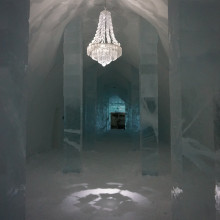
Record of the Week: Ice Hotel
with Heather Jameson, The Naked Scientists
Now, this is the part of the show where we usually tackle your questions for Question of the Week - but as it’s extreme month, we’re bringing you an extreme record of the week. This week Heather Jameson has been looking into some really cool buildings…
Heather - Humans have been using frozen water as a building material for centuries. The inuit mastered the technique of building igloos using the most abundant material they had available: snow.
The igloo was a means for hunters to survive brutal winters in a vast area spanning more than 3,500 miles, including eastern Siberia, Greenland, Alaska and parts of Canada, which can reach chilling temperatures of -58 degrees celsius.
Despite being made of frozen water, the temperature on the inside of an igloo can be 40 degrees celsius higher than the outside when warmed by body heat alone. That’s because pockets of air trapped in the snow provide really good insulation.
Contrary to the way they are often depicted, an igloo is not so much a perfect dome shape but more of a cone shape with a curved top - otherwise known as a paraboloid. When it comes to this shape, compression is key. The snow bricks are strong when you push down on them, but if you held a snow brick in both hands and pulled your hands apart the brick would crumble. An igloo that is built correctly will support the weight of a person standing on the roof.
Traditional inuit igloos have an average internal diameter of three and a half meters and the largest ever built had an internal diameter of over nine meters.
But the largest structure ever to have been built from ice is the ICEHOTEL in Jukkasjärvi, Sweden.The entire hotel is made out of snow and ice blocks, even the glasses in the bar are made of ice! This requires around 1,000 tonnes of ice and a volume of about 30,000 cubic metres of “snice”... And no, that’s not just a compliment you give someone if their igloo is particularly fetching.
Snice is a cross between snow and ice, it is made from a carefully controlled combination of water and air. It reflects the sun rays and protects the ice inside the hotel from melting, which is down to the fact that snice has a higher density than natural snow and therefore insulates better and melts slower.
But ready your sunglasses for this snowy site, Jukkasjärvi’s high positioning on the globe means that it experiences almost a hundred days of continuous daylight in summer months. With so much sunlight, this traditionally meant that the whole of the hotel melted back into the river every year. But now the ICEHOTEL is using this solar power to its advantage and since 2017 the hotel has been open for business all year round. That’s thanks to a large concrete shell that has been erected to house a part of the ice hotel. The concrete shell is cooled by refrigerators which runs off the power generated by 600 square meters of solar panels, which can capture 24 hours of sunlight throughout the summer months.
So now guests can enjoy cocktails in the ice-bar under the northern lights in the winter or the midnight sun in the summer, either way I’m sure they would say that it’s pretty snice.
Related Content
- Previous Apollo 11 Special (Part 1)
- Next How to mend a broken heart





Comments
Add a comment